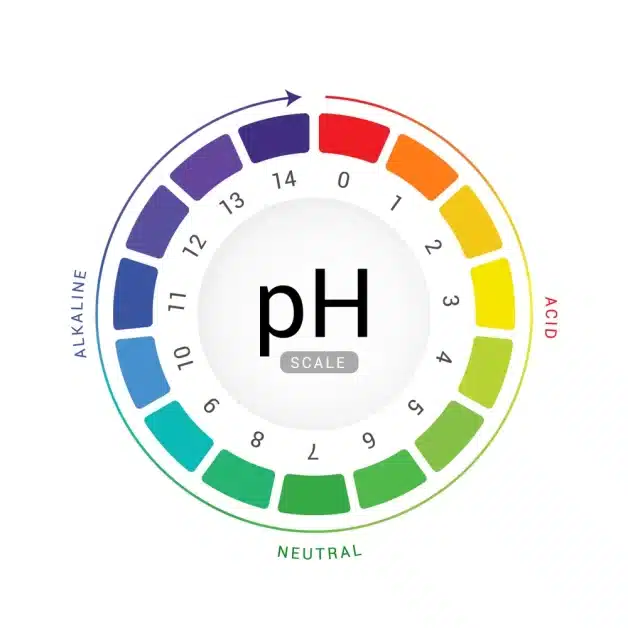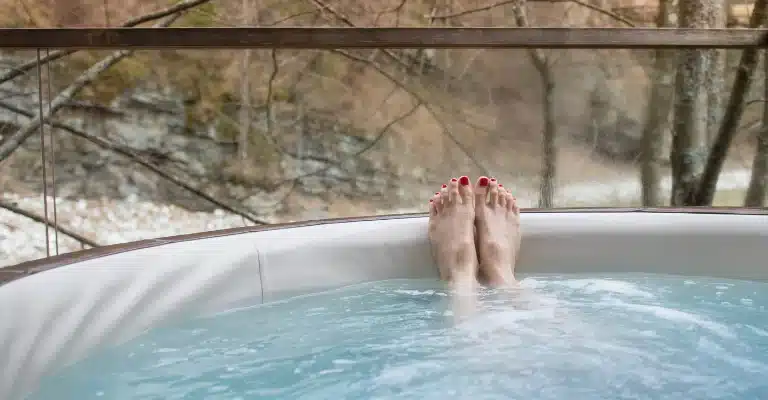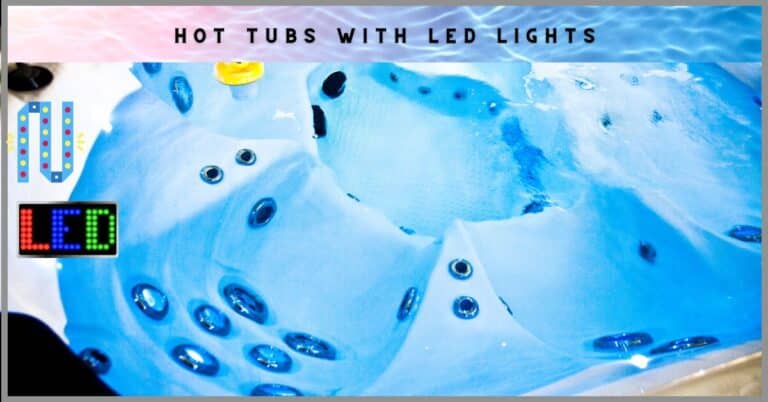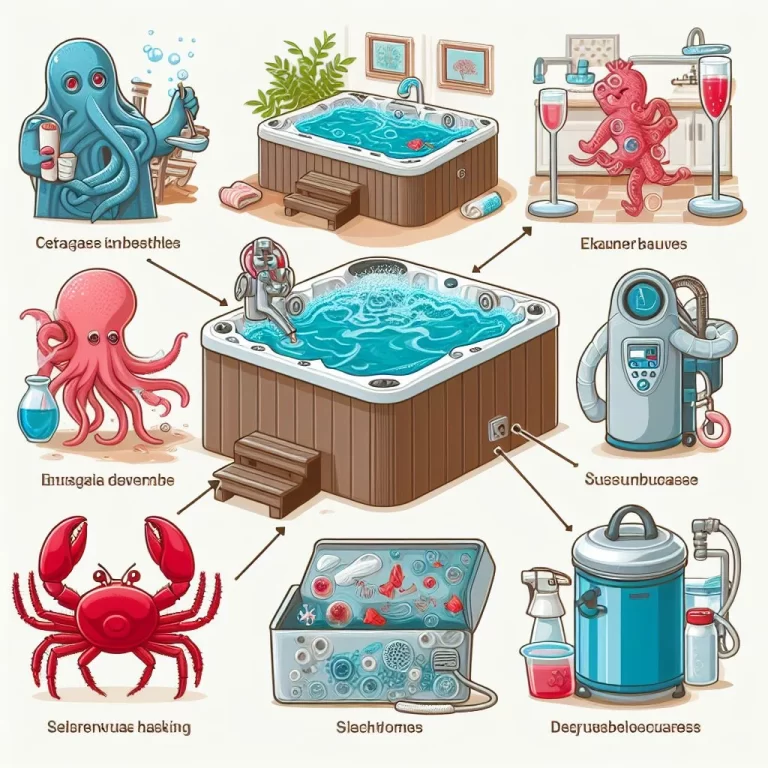5 Simple Steps to Raise Alkalinity in Hot Tub Without Affecting pH
Learn how to Raise Alkalinity in a Hot Tub Without Affecting pH balance. This guide covers safe ways to raise alkalinity using baking soda or alkaline products. Get tips on testing and adjusting alkalinity for proper sanitation and hot tub water comfort.
To raise alkalinity in a hot tub without affecting pH, you can use sodium bicarbonate (baking soda). Sodium bicarbonate is a buffer, which means that it helps to stabilize the pH of water. It is also a safe and inexpensive product to use.
To raise alkalinity using baking soda, follow these steps:
- Test the alkalinity of your hot tub water. You can use a test strip or a liquid test kit.
- Calculate the amount of baking soda needed to raise the alkalinity to the desired level. The following formula can be used:
Amount of baking soda (in pounds) = (Desired alkalinity – Current alkalinity) x Volume of hot tub water (in gallons) / (2000 x 100)
For example, if the desired alkalinity is 120 ppm, the current alkalinity is 80 ppm, and the hot tub contains 500 gallons of water, then the amount of baking soda needed is:
Amount of baking soda (in pounds) = (120 ppm – 80 ppm) x 500 gallons / (2000 x 100) = 0.5 pounds
- Dissolve the baking soda in a bucket of hot tub water.
- Pour the baking soda solution into the hot tub water and run the jets for at least 15 minutes to circulate the water.
- Test the hot tub water’s alkalinity again to ensure it is at the desired level.
It is important to note that raising alkalinity can also raise pH slightly. However, by adding baking soda slowly and carefully, you can minimize the effect on pH.
Tips for raising alkalinity in a hot tub without affecting pH:
- Add baking soda in small amounts and test the alkalinity frequently. This will help you to avoid raising the alkalinity too high.
- Add baking soda to the hot tub water when the jets are running. This will help to circulate the baking soda solution throughout the water and minimize the effect on pH.
- If you are concerned about raising pH, you can use a pH stabilizer in addition to baking soda. A pH stabilizer will help to keep the pH of your hot tub water stable, even as the alkalinity changes.
Please consult a professional if you have any questions or concerns about raising alkalinity in your hot tub.

Raise Alkalinity in the Hot Tub Without Affecting the pH
In this article, we will show you how to raise alkalinity in your hot tub without affecting pH in five simple steps. We will also explain why low TA is bad for your hot tub and how to prevent it from happening again.
Step 1: Test the Water
The first step to raising alkalinity in your hot tub without affecting pH is to test the water. You can use a test kit or test strips to measure your water’s TA and pH levels. You can also use a digital meter for more accuracy.
If your TA is below 80 ppm, you need to raise it. Use a product that raises TA without affecting pH if your pH is within the ideal range. If your pH is also low, use a product that will raise both TA and pH.
Step 2: Choose the Right Product
The second step to raising alkalinity in your hot tub without affecting pH is to choose the right product. Two main products can raise TA in a hot tub: baking soda and soda ash.
Baking soda (sodium bicarbonate) is a common household item that can raise TA with minimal effect on pH. It is also inexpensive and easy to find. However, it may take a lot of baking soda to achieve the desired TA level, depending on how low it is.
Soda ash (sodium carbonate) is a more potent product that can raise both TA and pH. It is also more expensive and harder to find than baking soda. However, it may be more efficient and effective if your TA and pH are both low.
To decide which product to use, you need to consider your current TA and pH levels, as well as your budget and availability.
Step 3: Calculate the Amount
Calculating the product you need to add is the third step to raising alkalinity in your hot tub without affecting pH. This will depend on the size of your hot tub, the current TA level, and the target TA level.
You can use online calculators or charts to estimate the amount of baking soda or soda ash you must add. Alternatively, you can use this simple formula:
Amount (in grams) = (Target TA – Current TA) x Volume (in liters) x 0.0058
For example, if your current TA is 60 ppm and your target TA is 100 ppm, and your hot tub has a volume of 1,000 liters, you need to add:
(100 – 60) x 1,000 x 0.0058 = 232 grams
If you use baking soda, multiply this amount by 1.5 since baking soda has less sodium carbonate than soda ash.
232 x 1.5 = 348 grams
If you are using soda ash, you can use this amount as it is.
Step 4: Add the Product
Adding the product is the fourth step to raising alkalinity in your hot tub without affecting pH. Before doing this, ensure your hot tub runs and the jets are on. This will assist in distributing the product evenly and prevent clumping or cloudiness.
You can dissolve the product in a bucket of warm water first or add it directly to the hot tub. If you choose the latter option, sprinkle it slowly and evenly over the water’s surface.
Do not add more than one pound (454 grams) of product at a time. Wait an hour before adding more product or testing the water again.
Step 5: Test and Adjust
The fifth and final step to raise alkalinity in your hot tub without affecting pH is to test and adjust. After waiting an hour or more, test the water again using a test kit or test strips. Check both the TA and pH levels.
Congratulations if your TA is within the ideal 80 to 120 ppm range! You have successfully raised alkalinity in your hot tub without affecting pH.
- If your TA is still too low, repeat steps 3 and 4 until you reach the desired level.
- If your TA is too high, you need to lower it using an acid product such as muriatic or dry acid. Follow the teachings on the product label and test the water again.
- You are good to go if your pH is within the ideal range of 7.2 to 7.8.
- If your pH is too low, you must raise it using a pH increaser product such as sodium carbonate or potassium carbonate. Follow the instructions on the product label and test the water again.
Lower your pH using a pH-decreased product such as sodium bisulfate or muriatic acid if your pH is too high. Follow the instructions on the product label and test the water again.

Why Low TA Is Bad for Your Hot Tub
You may wonder why low TA is bad for your hot tub and why you must raise it. Here are some of the reasons why low TA can cause problems for your hot tub:
- Low TA can cause pH fluctuations. Without enough TA to buffer the pH, the pH level can change rapidly and unpredictably due to various factors such as rain, contaminants, chlorine, and temperature. This can make it hard to maintain balanced water chemistry and cause damage to your hot tub and irritation to your skin and eyes.
- Low TA can cause corrosion. When the pH level drops below 7.0, the water becomes acidic and can corrode the metal parts of your hot tub, such as the heater, pump, filter, jets, and fittings. This can reduce the lifespan of your hot tub and increase the risk of leaks and malfunctions.
- Low TA can cause scaling. When the pH level rises above 7.8, the water becomes alkaline and can cause calcium and other minerals to precipitate out of the water and form scale deposits on the surfaces of your hot tub. This can reduce the efficiency of your heater, clog your filter, and make your water cloudy and unappealing.
How to Prevent Low TA in Your Hot Tub
Now that you know how to raise alkalinity in your hot tub without affecting pH, you may want to know how to prevent low TA from happening again. Here are some tips to keep your TA at a stable and optimal level:
- Test your water regularly. You should test your water at least once a week using a test kit or test strips. This will help you monitor your TA and pH levels and adjust as needed.
- Use quality products. You should use quality products designed for hot tubs and follow the manufacturer’s instructions carefully. Avoid using household products containing impurities or additives that can affect your water chemistry.
- Use a cover. You should use a cover when your hot tub is not in use. This will prevent rain, debris, and pollutants from entering your water and altering your TA and pH levels.
- Drain and refill your water periodically. You should drain and refill your water every three to four months or as your hot tub manufacturer recommends. This will help remove any buildup of contaminants or chemicals that may affect your TA and pH levels.
For additional information, visit Hot Tub Patio, or if you’re interested in more reading, see our hot tub water guide.
Final Thoughts:
Raising alkalinity in your hot tub without affecting pH is not a difficult task if you follow these five simple steps:
- Test the water
- Choose the right product.
- Calculate the amount
- Add the product
- Test and adjust
Doing so will ensure a balanced water chemistry that will protect your hot tub from damage and algae growth and provide a comfortable and safe soaking experience for you and your guests.
We hope this article has been helpful and informative for you. If you have any questions or comments, please leave them below.













7 Comments